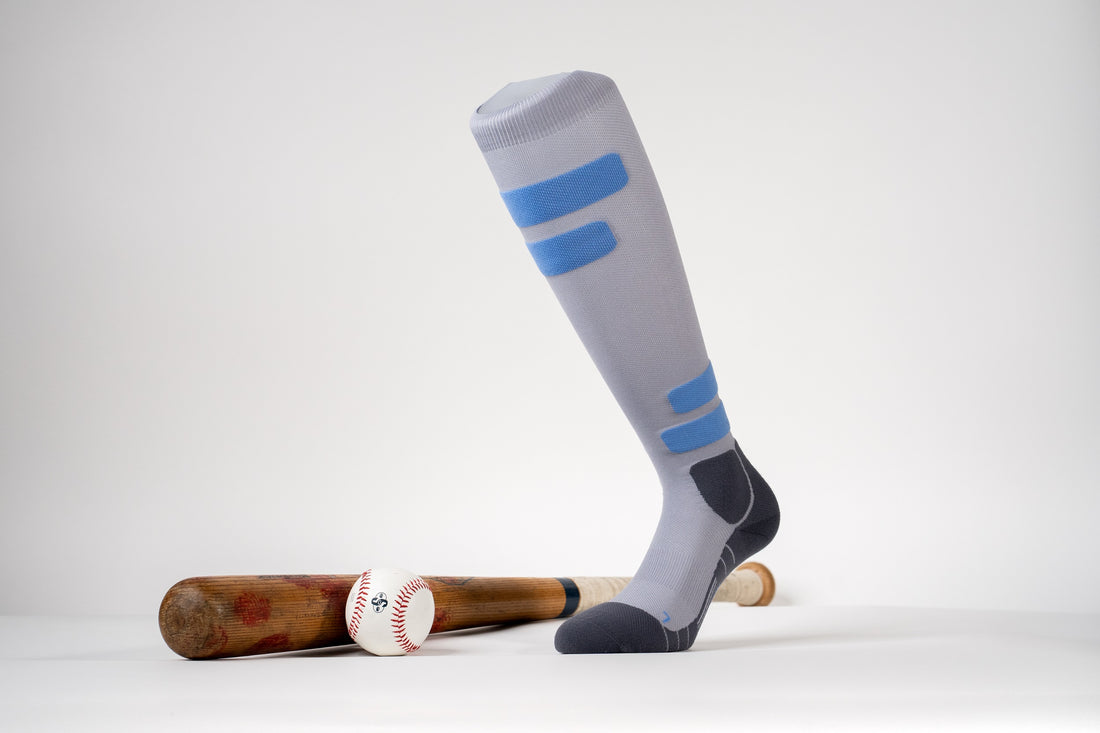
Why Athletes Need Compression Level 20-30 mmHg
Share
Athletic Potential with Compression Socks:
As an athlete, you're constantly pushing your body to the limit in pursuit of peak performance. Whether you're training for a marathon, hitting the gym for an intense workout, or competing on the field, every advantage counts. That's where compression socks come in – and not just any compression socks, but those with a compression level of 20-30 mmHg. Let's delve into why these socks are a game-changer for athletes like you.
1. Enhanced Circulation for Improved Performance
Compression socks with a compression level of 20-30 mmHg provide optimal compression to boost circulation throughout your legs. By improving blood flow, these socks deliver more oxygen and nutrients to your muscles, enhancing their endurance and performance. With increased circulation, you'll experience less fatigue, quicker recovery times, and ultimately, better athletic performance.
2. Reduced Muscle Fatigue and Soreness
Intense workouts and high-impact activities can take a toll on your muscles, leading to fatigue and soreness. Compression socks with a compression level of 20-30 mmHg help reduce muscle vibration and micro-tears, minimizing the risk of injury and post-exercise soreness. By providing targeted compression to key muscle groups, these socks keep your legs feeling fresh and energized, allowing you to train harder and longer.
3. Improved Lactate Clearance
During strenuous exercise, your muscles produce lactate, a byproduct of anaerobic metabolism that can contribute to muscle fatigue. Compression socks with a compression level of 20-30 mmHg aid in the clearance of lactate from your muscles, allowing you to maintain peak performance for longer periods. This means you can push through fatigue barriers and achieve new personal bests with confidence.
4. Enhanced Joint Stability and Support
Athletes put their joints under immense stress, especially during high-impact activities like running and jumping. Compression socks with a compression level of 20-30 mmHg offer superior joint support and stability, reducing the risk of injuries such as sprains and strains. The targeted compression around the ankle joint provides added stability, giving you the confidence to push your limits without fear of injury.
5. Faster Recovery and Injury Prevention
Recovery is essential for athletic success, and compression socks play a crucial role in the post-workout recovery process. By facilitating blood flow and lymphatic drainage, compression socks with a compression level of 20-30 mmHg accelerate muscle recovery, reduce swelling, and alleviate muscle stiffness. This not only speeds up recovery between workouts but also helps prevent overuse injuries, keeping you in peak condition year-round.
Experience the Difference with Compression Level 20-30 mmHg
When it comes to athletic performance, every advantage matters. Compression socks with a compression level of 20-30 mmHg provide the perfect balance of support, compression, and comfort to help you reach your full potential. Whether you're a seasoned athlete or just starting your fitness journey, investing in quality compression socks can make all the difference in your performance and recovery.
Ready to Elevate Your Performance?
Discover the benefits of compression socks with a compression level of 20-30 mmHg and take your athletic performance to new heights. With improved circulation, reduced fatigue, and faster recovery, these socks are the secret weapon you need to surpass your goals and achieve greatness. Don't settle for anything less – gear up with compression socks designed for champions.
Unlock Your Athletic Potential Today
Visit our website www.medisports.ca to explore our range of compression socks with a compression level of 20-30 mmHg and experience the difference for yourself. Elevate your performance, enhance your recovery, and become the athlete you were born to be with compression socks tailored to your needs.
